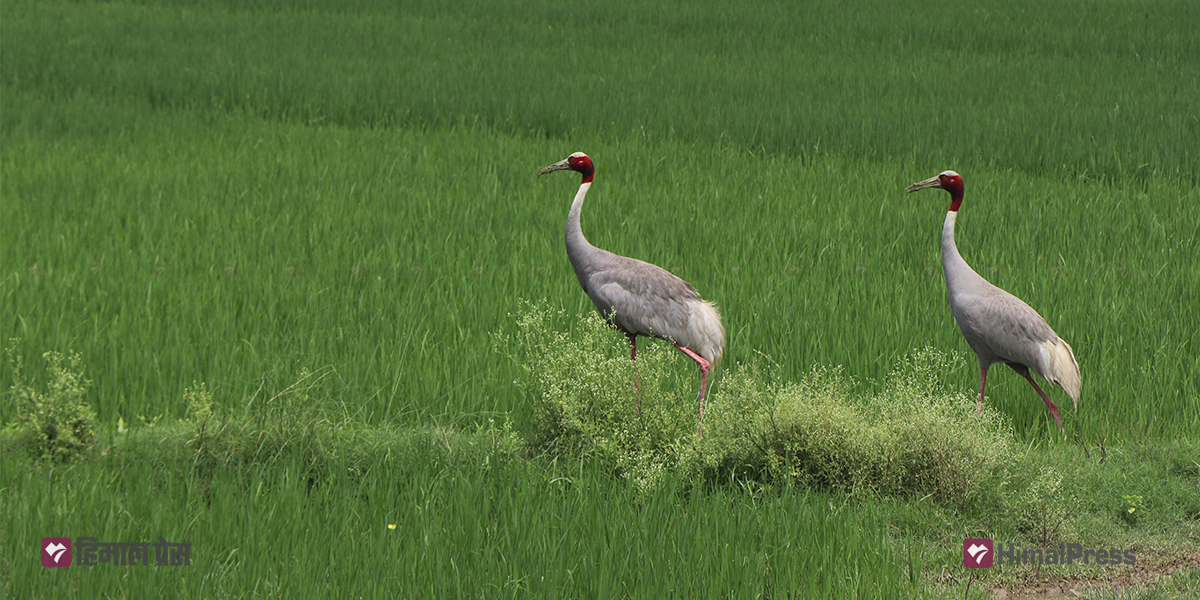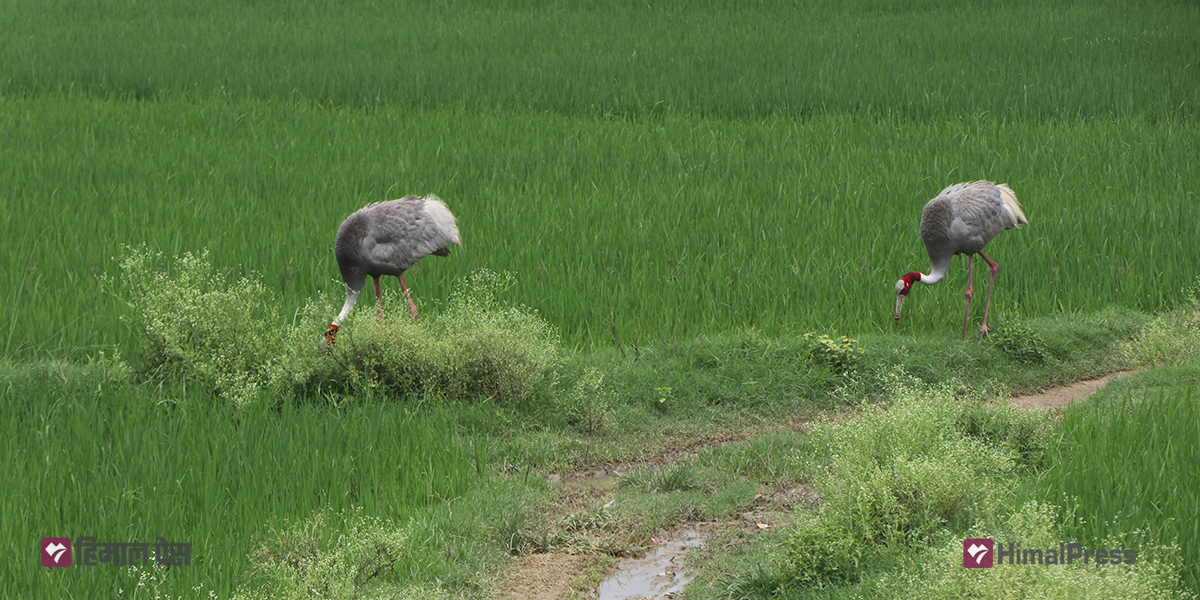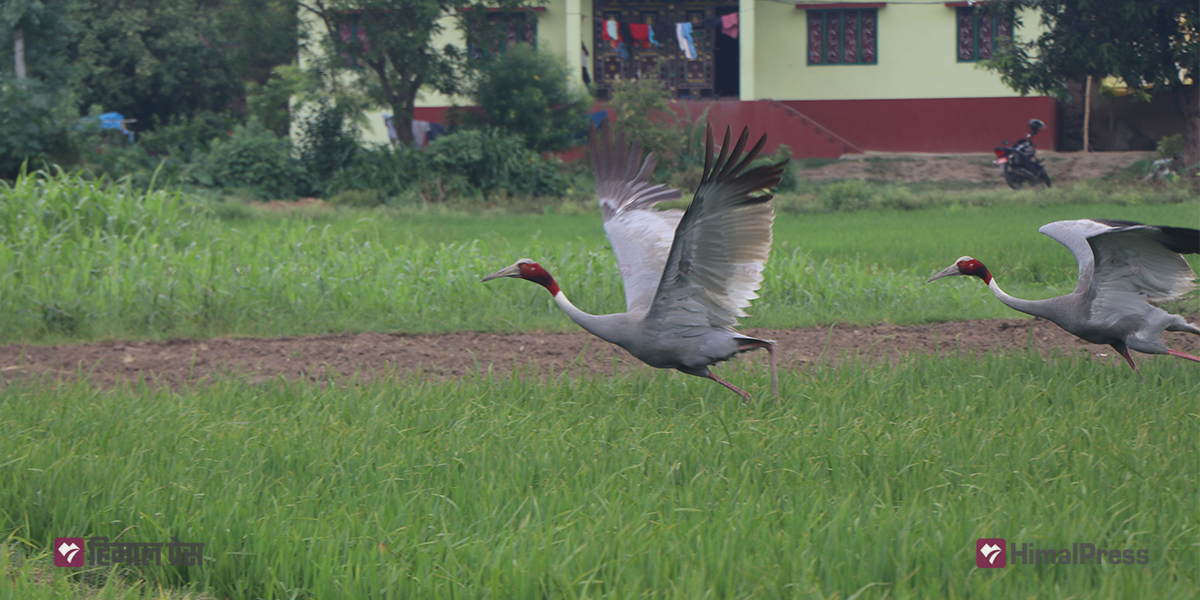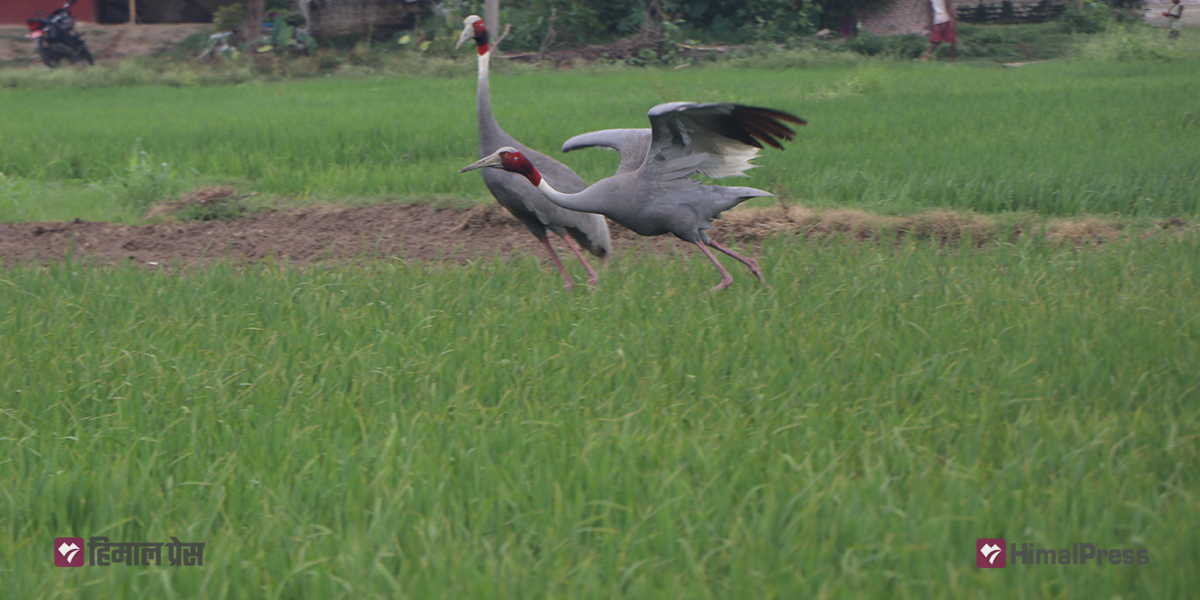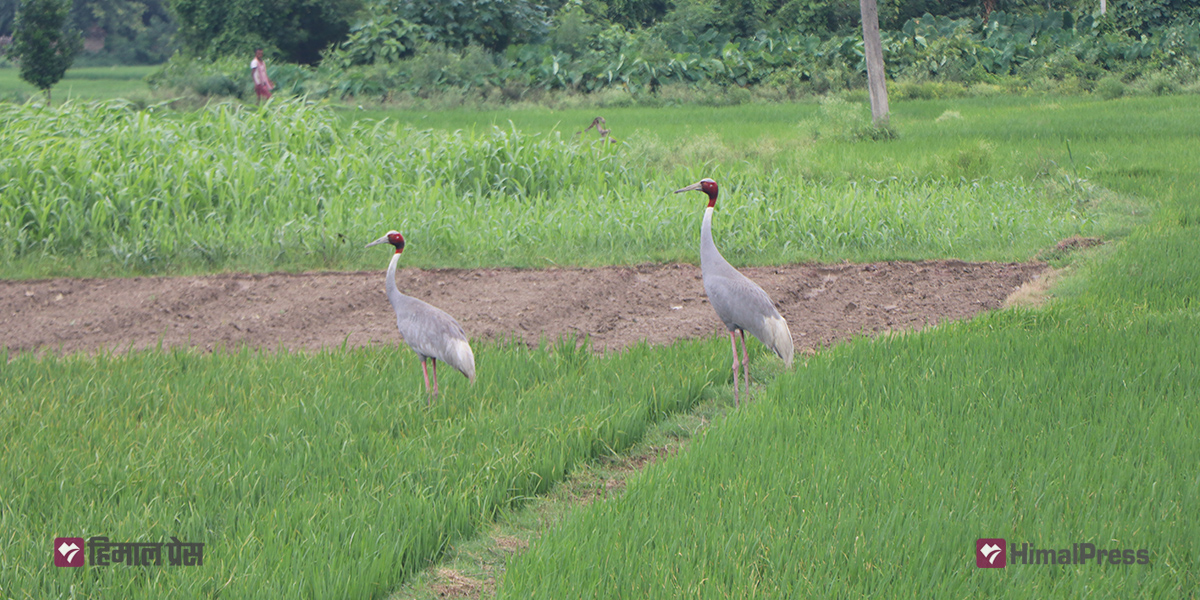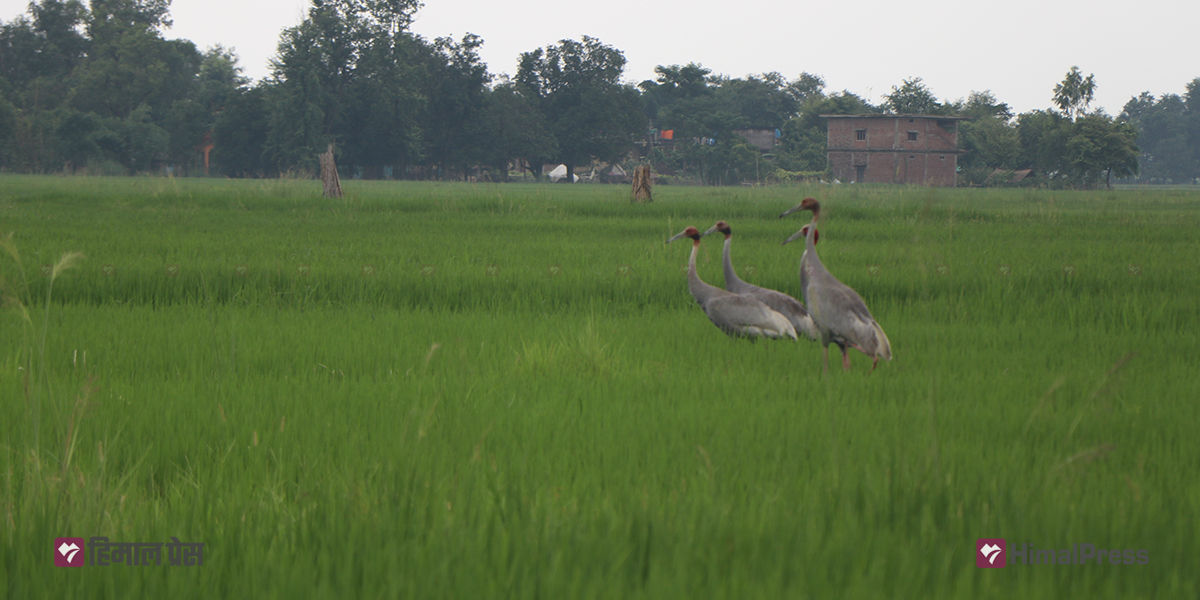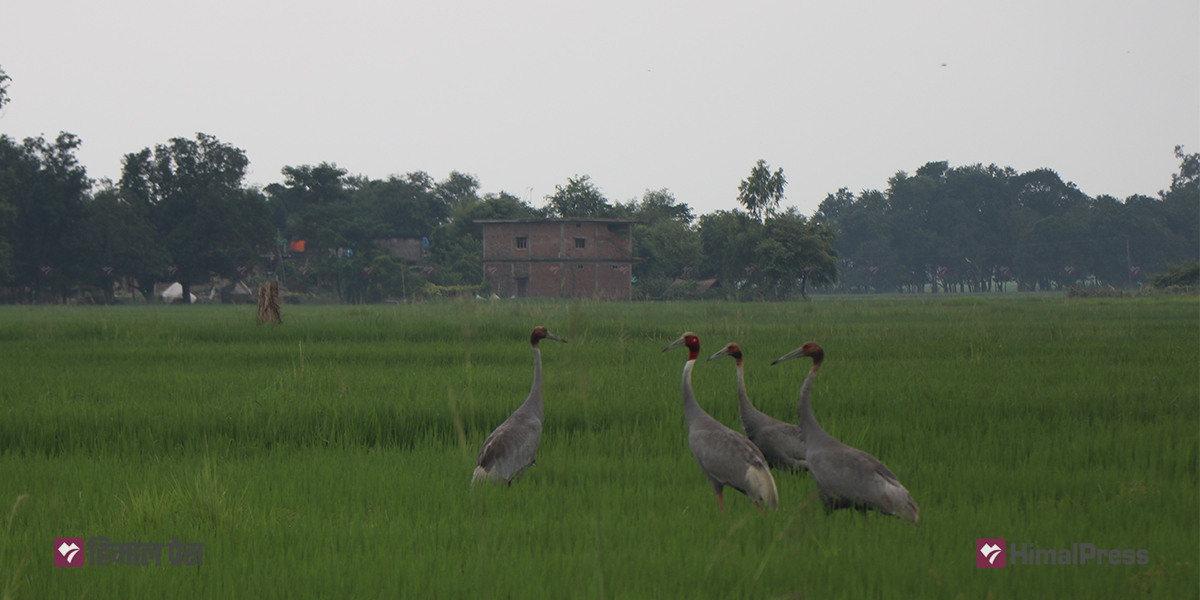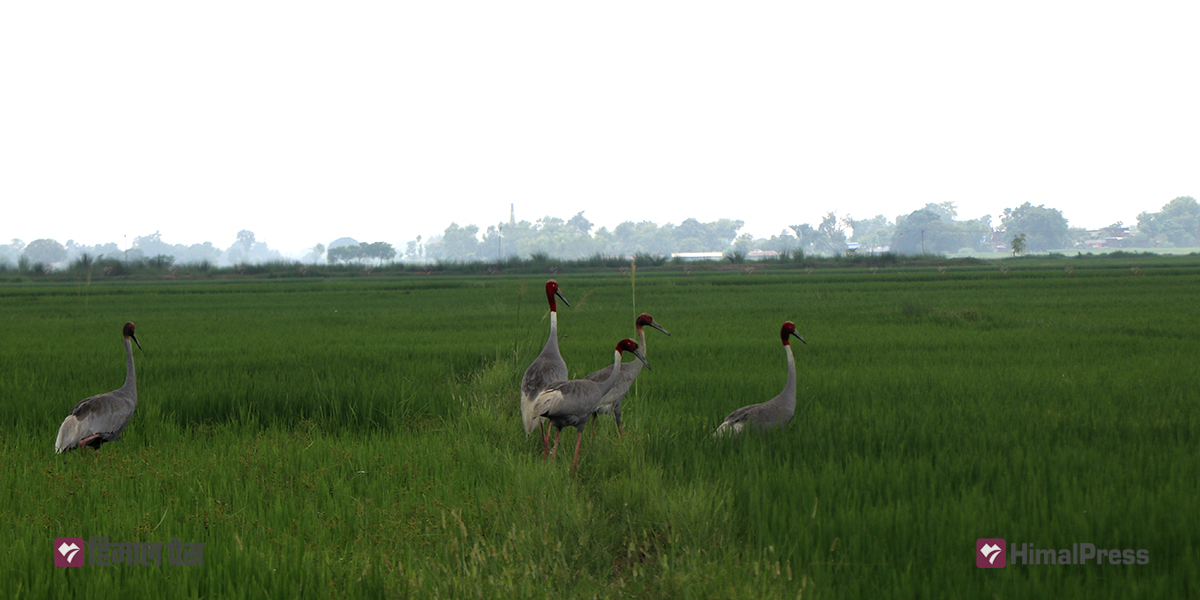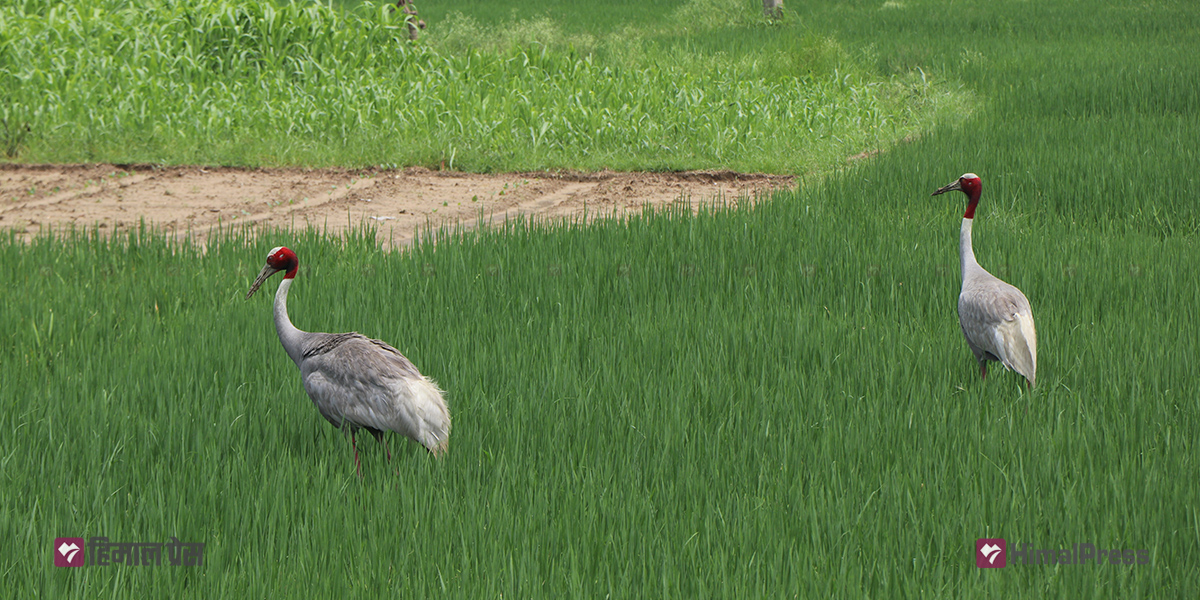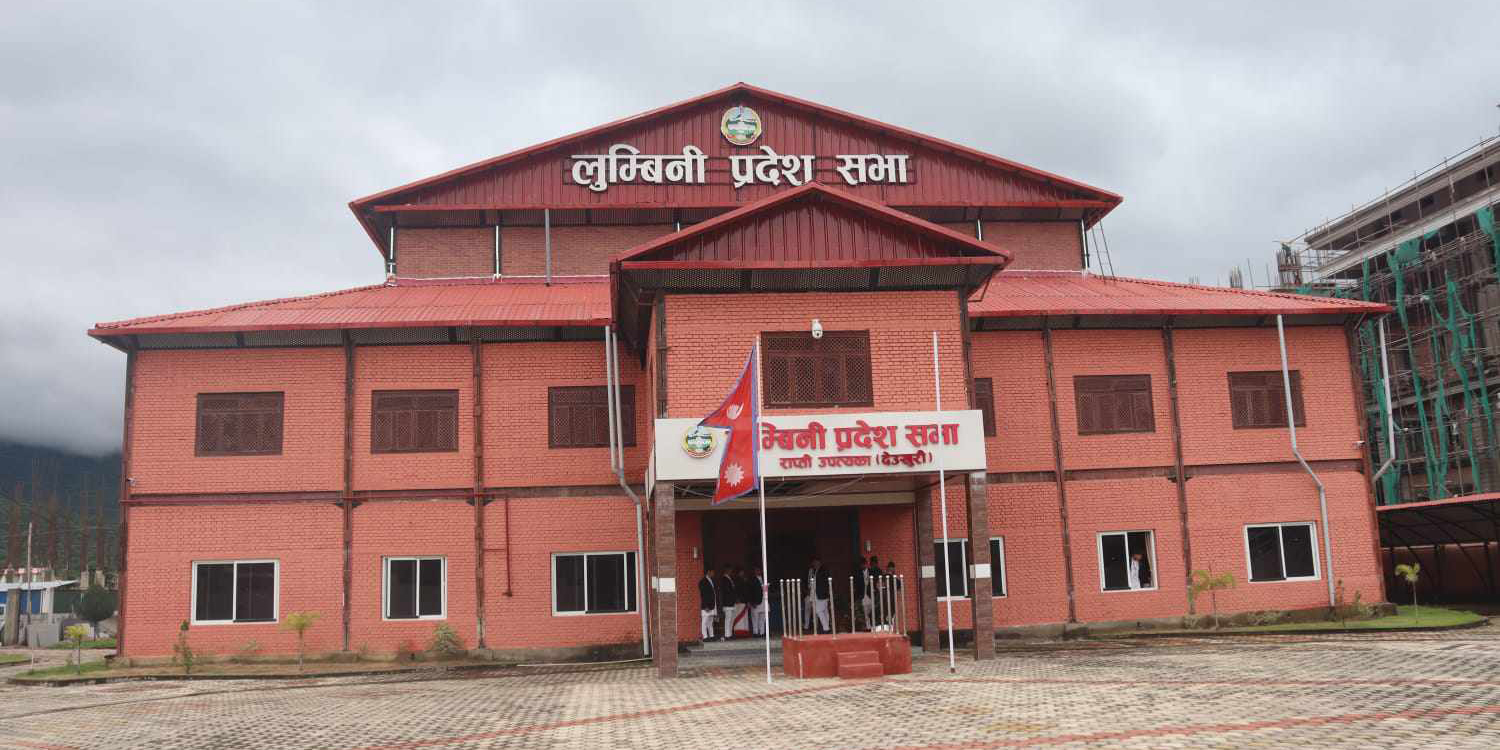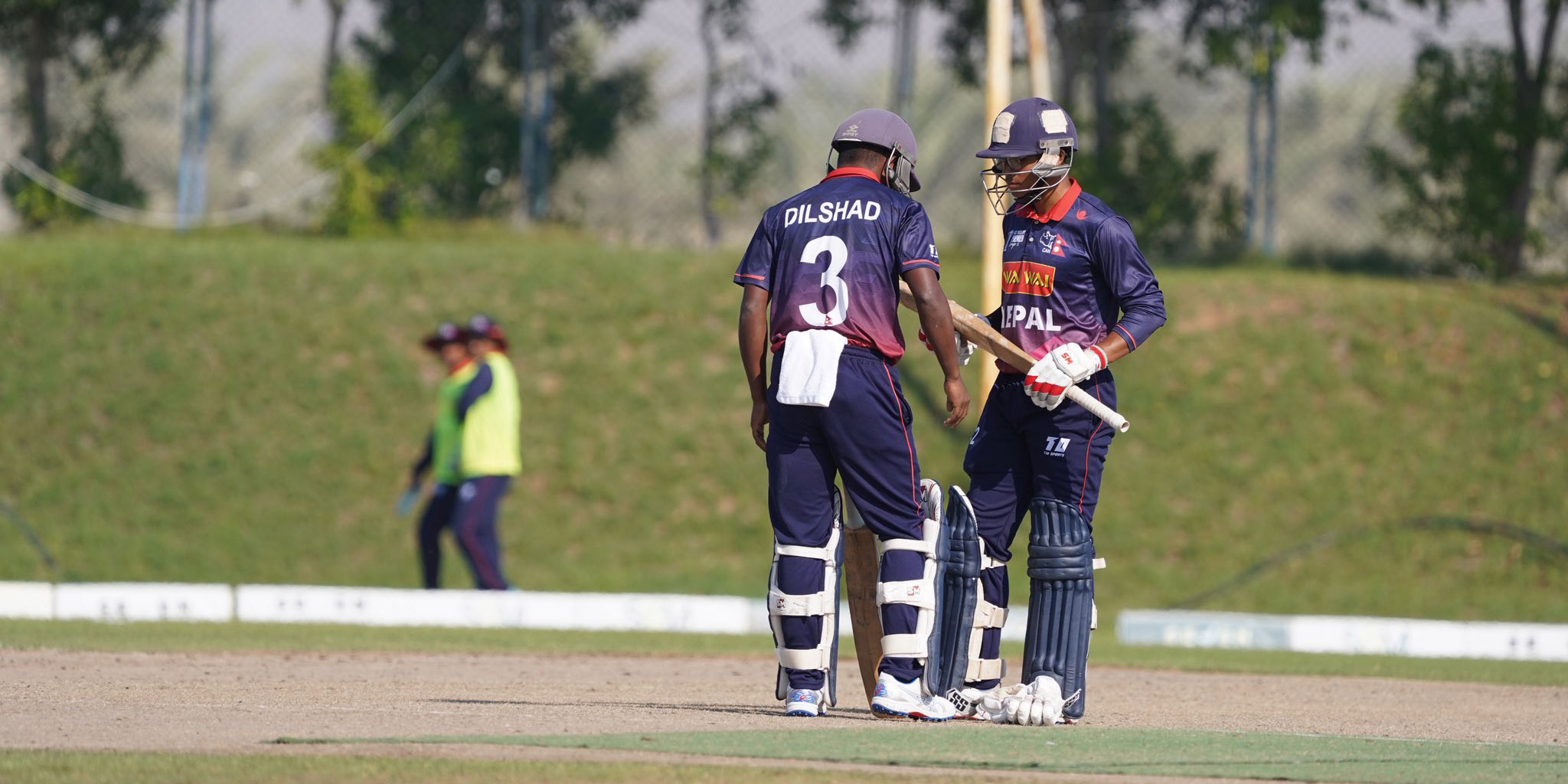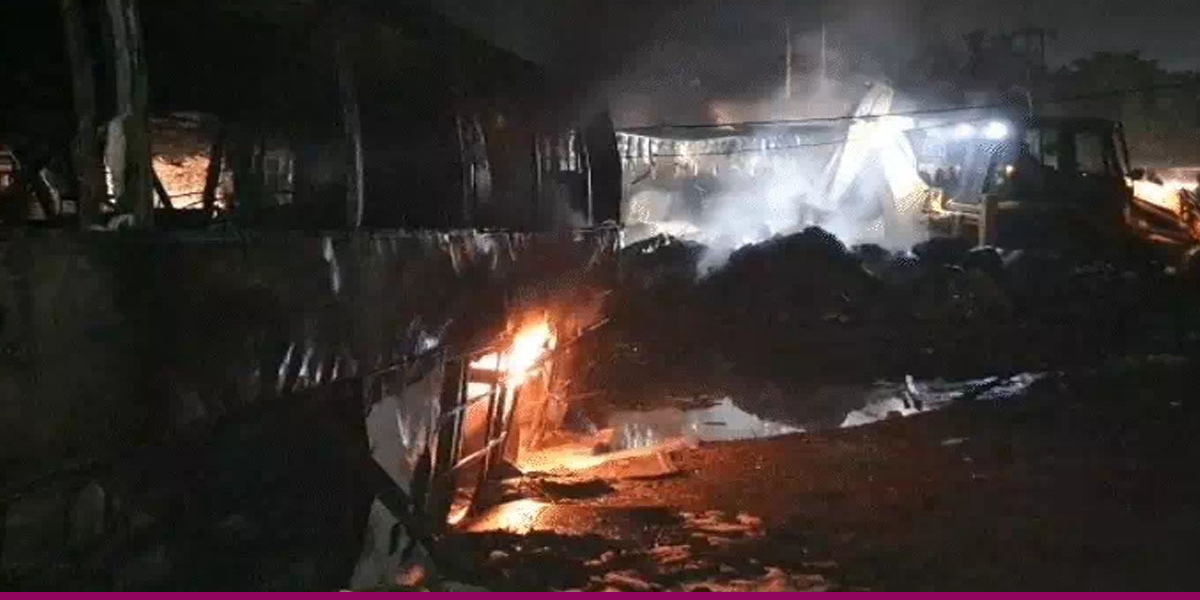![Sarus cranes find sanctuary in Lumbini paddy fields [In Pictures]](https://en.himalpress.com/wp-content/uploads/2023/10/Saras9.jpg)
LUMBINI: Lumbini, the birthplace of Buddha, and its surrounding areas are a preferred habitat for the Sarus crane (Grus Antigone ). These magnificent birds are commonly spotted in the paddy fields of the Rupandehi and Kapilvastu districts.
Sarus cranes, the tallest flying birds, typically hatch their eggs between mid-July and mid-August, and their chicks grow amidst the paddy fields.
Experts have observed that Sarus cranes in the Lumbini-Kapilvastu region have gradually shifted their habitat northward in recent years due to human encroachment and increasing construction activities. These birds, which were once predominantly seen in the Lumbini Sanskritik and Mayadevi local units of Rupandehi, and Mayadevi and Kapilvastu local units of Kapilvastu, were sighted in the Siyari Rural Municipality, located north of Lumbini Sanskritik and Mayadevi local units of Rupandehi, this year.
Sarus cranes, often described as symbols of love, are frequently seen in pairs. They have also been mentioned in different Buddhist scriptures. The Lumbini Sanskritik Municipality has taken steps to protect these birds by designating them as the ‘Municipal Bird’. Sarus cranes can also be found in Australia, Cambodia, China, India, Laos, Myanmar, Pakistan, and Vietnam.
The farmlands in Lumbini are recognized as important biodiversity areas in Nepal and have also been acknowledged by BirdLife International.
Sarus cranes have been spotted in various other locations in Nepal, such as the Beldandi and Kalich Lake area in Shuklaphanta National Park, the Badhiya Lake area in Bardia, Nepalganj in Banke, Dang, the Jagdishpur Ramsar site, as well as in Chitwan and Nawalparasi districts.
According to the Department of National Parks and Wildlife Conservation, the Sarus crane population in Nepal is estimated to be around 700. Ornithologist Krishna Bhusal says more than 90% of Sarus cranes are found in Rupandehi, Nawalparasi, and Kapilvastu districts. Sarus cranes lay only two eggs once a year. These cranes breed during the monsoon season and have already hatched chicks in paddy fields.
The Sarus crane has been listed as a vulnerable species on the IUCN’s Red List of Threatened Species. Likewise, the National Park and Wildlife Conservation Act accords this bird ‘protected’ status.

